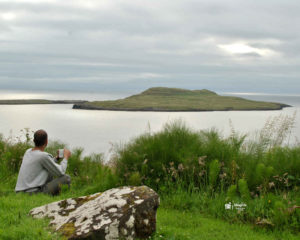It’s been more than an year since I last published a post here. For various reasons, I have been a bit demotivated to write and then I also was quiet occupied with my PhD – hence the long silence. However, during these months I realised that I like to write. Even if not on my own blog I had been writing occasional Science articles (mostly about outer space) here. So I finally decided to write my next blog post, even amidst incredibly stressful days, inspired by a spectacle I got to watch thanks to a wonderful friend. I experienced what I had dreamed of since years – to watch the salmons leaping against current. To add to my joy, I could also capture a few photographs.
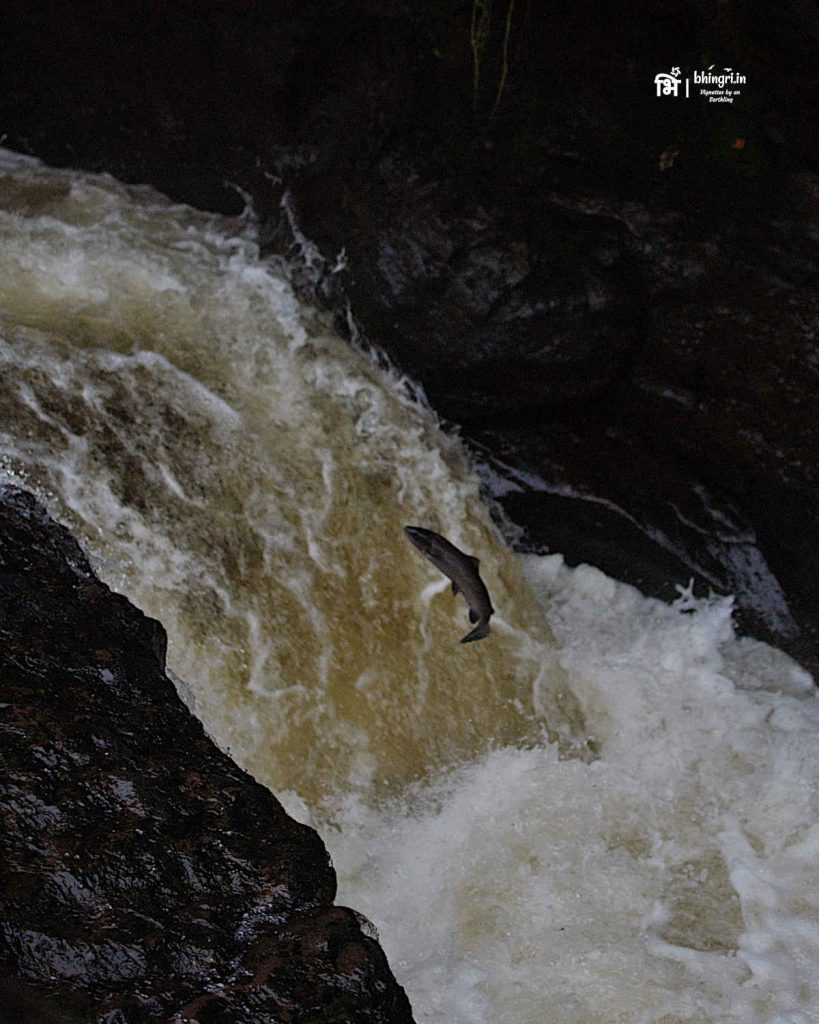
Why do salmons swim upstream?
Salmons are mixed water fish. They are anadromous – they are born in fresh water, then migrate to the ocean, and later return to the fresh water to spawn. It is mind-boggling how nature sometimes works in seemingly strange ways. Growing up, I remember watching on National Geographic channel those thrilling visuals. A roaring stream and a bear waiting calmly for its prey – the salmons. As they would try to swim past it, in the opposite direction of the flow, the bear would feast on them.
Every autumn, the salmons return to the fresh water streams where they were born. With every ounce of their strength they swim against the current, jump up the steep drops to calmer water. They mate and the female fish lays huge number of eggs. Stunning fact is – in just a few days almost all of them simply die of exhaustion – (of swimming against current ?? nope) the overdose of mating hormones! This apparently is a phenomenon not just in salmons but many other species. Scientists call it Semelparity.
But why at all did this strange way of life evolve? The answer to this is quiet bewildering to me. All living beings have developed different ways to reproduce but are guided by one simple motivations – how much energy to spend on reproduction. Spend less energy to give birth to less number of offspring repeatedly OR spend it like there’s no tomorrow to give birth to an army of next generation and die ultimately. This is an approach to maximise the reproduction capacity at the cost of current generation of the species. This strategy allows the salmons to lay as many as 15000 eggs after a single mating session but have to die because of the overproduction of the hormones required to do so. I think, that must be one hell of a sexual experience i.e. if you are a salmon.
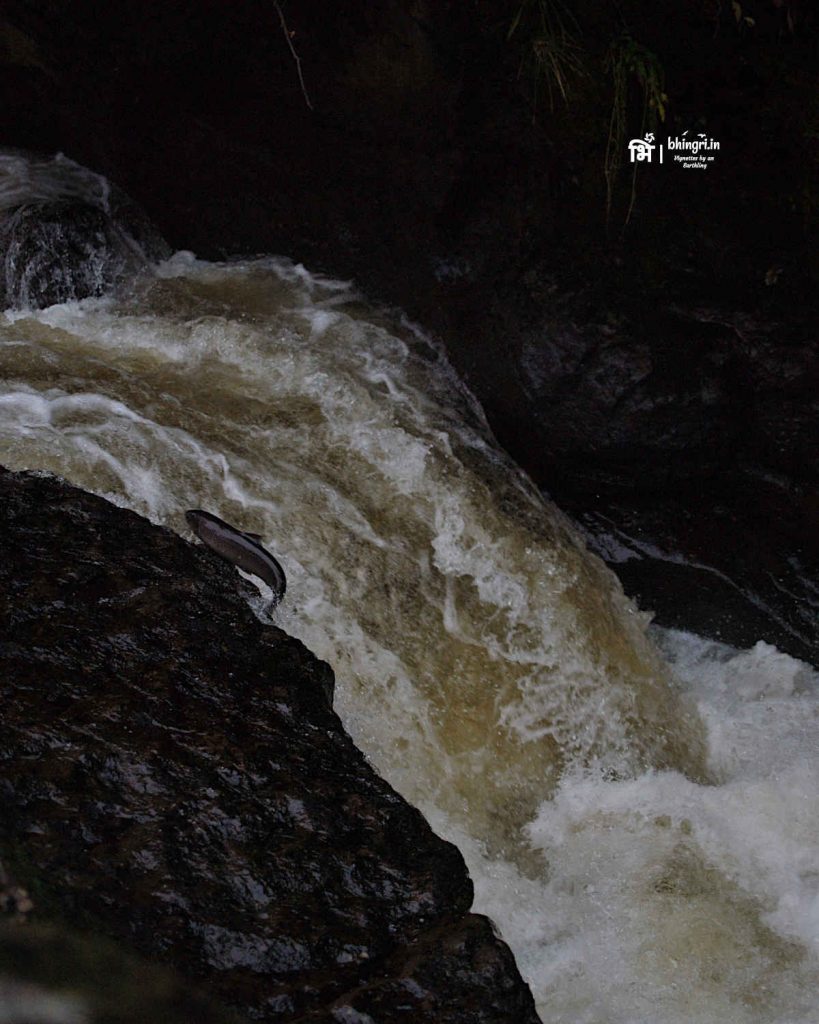
Watching salmons leap upstream
Being in Scotland I definitely wanted to watch this spectacle myself. I tried to see these leaping salmons in different locations in the past couple of years but with no luck. This year however, I got lucky. A friend suggested a new location – Buchanty Spout near Perth. The weather was perfect the following weekend. The salmons apparently start swimming upstream around a sudden spell of rain after a dry period. The best time to catch them leaping is early morning or evening. Keeping this in mind we left early morning on the weekend when there was a clear prediction of rain later.
The place was picturesque and we had the perfect location to spot them in action. We might have waited for barely 10 minutes – lo and behold, one mighty salmon tried to jump up a tiny waterfall but unfortunately failed. There were many waiting to go, I think. It wasn’t easy for them at all. They were finding it hard to balance speed, moment, and luck. Many of them missed their aim and hit hard on the rock before tumbling down into water. They kept trying. After a whole 15 minutes one of them succeeded and we cheered (lightly). When I managed to capture a few images to my satisfaction, I left the camera alone and enjoyed the moment for some more time.
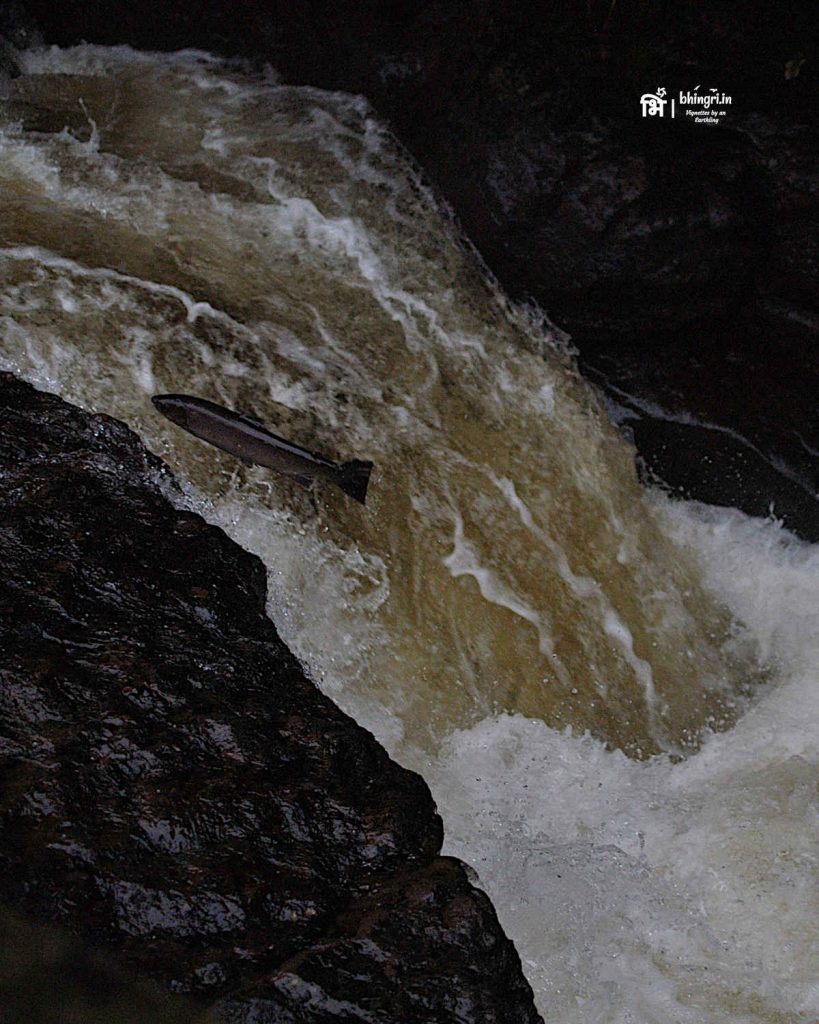
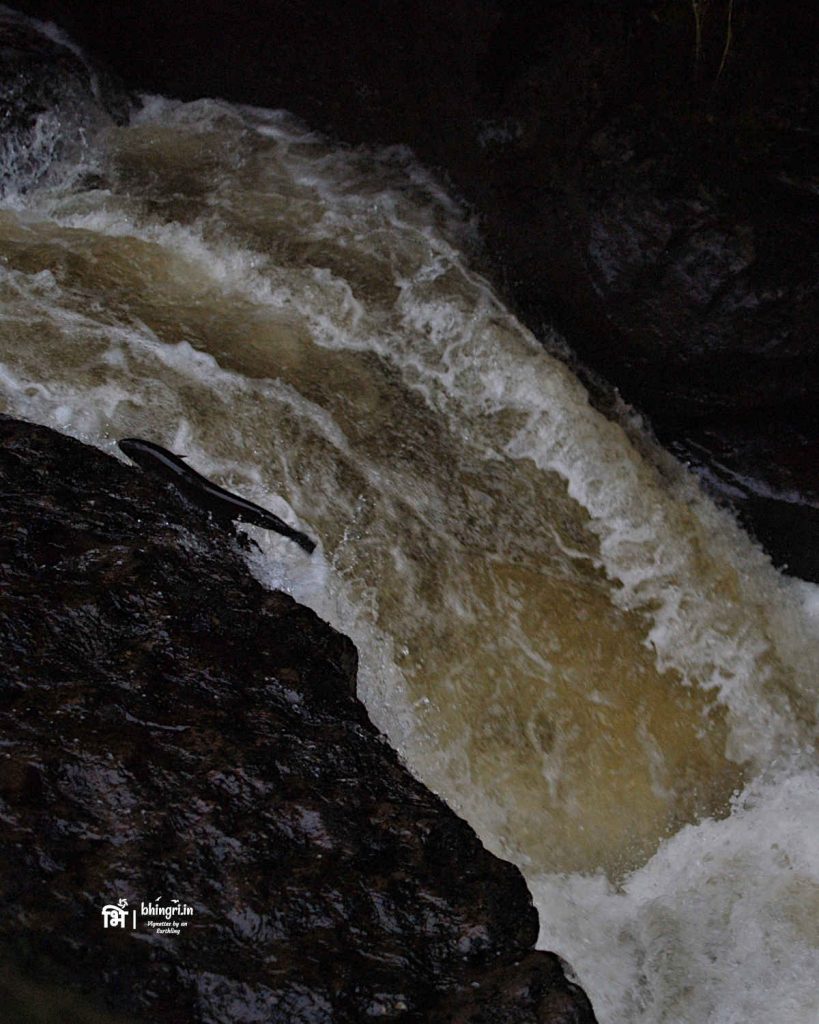
Side note: In UK, many years ago royals introduced certain bird species for sports hunting. I didn’t know that a Common Pheasant is a game bird, and I wondered why they hunt such a beautiful bird. We saw several of them by the road, as they are very common in Scottish countryside. On this particular day, I also witnessed how incredibly stupid these birds are. Incidentally they just do not perceive cars as threats and don’t move their asses one bit. When a human approaches them, however, they would run away as if they had seen a ghost.
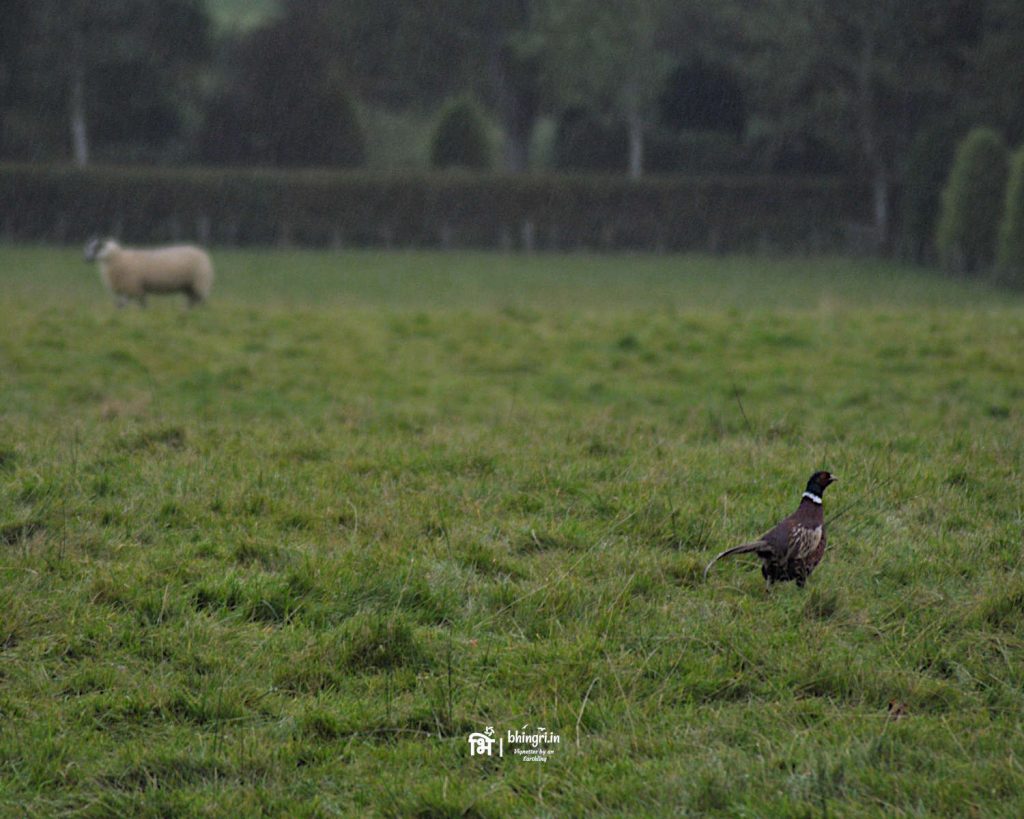
Where to go for salmon spotting in Scotland
Atlantic salmon is one of the native fish in the UK. They prefer shallow and fast flowing rivers to return for breeding. There are many small tributaries and rivers in Scotland where salmons are spotted every autumn. Most of these are in the Scottish highlands. The best location of them all, they say, is Falls of Shin in Sutherland.

Among others are Linn of Tummel (river Garry), Glen Tanar Estate (river Dee), Selkirk Salmon Viewing Centre (river Etterick), and the Hermitage (river Braan). Another very interesting location is Pitlochry dam and fish ladder. While I didn’t see any salmons going up the ladder I found the idea very satisfying. Dams are an ecological hazard and clearly affect life cycles in certain species. At Pitlochry dam, they have constructed a fish ladder and apparently 5000 salmons cross it every year! There’s a viewing window for visitors to watch the fish tackle the challenge. They also have installed screens which keep the big fish away from turbines and smaller ones can pass through the turbines.
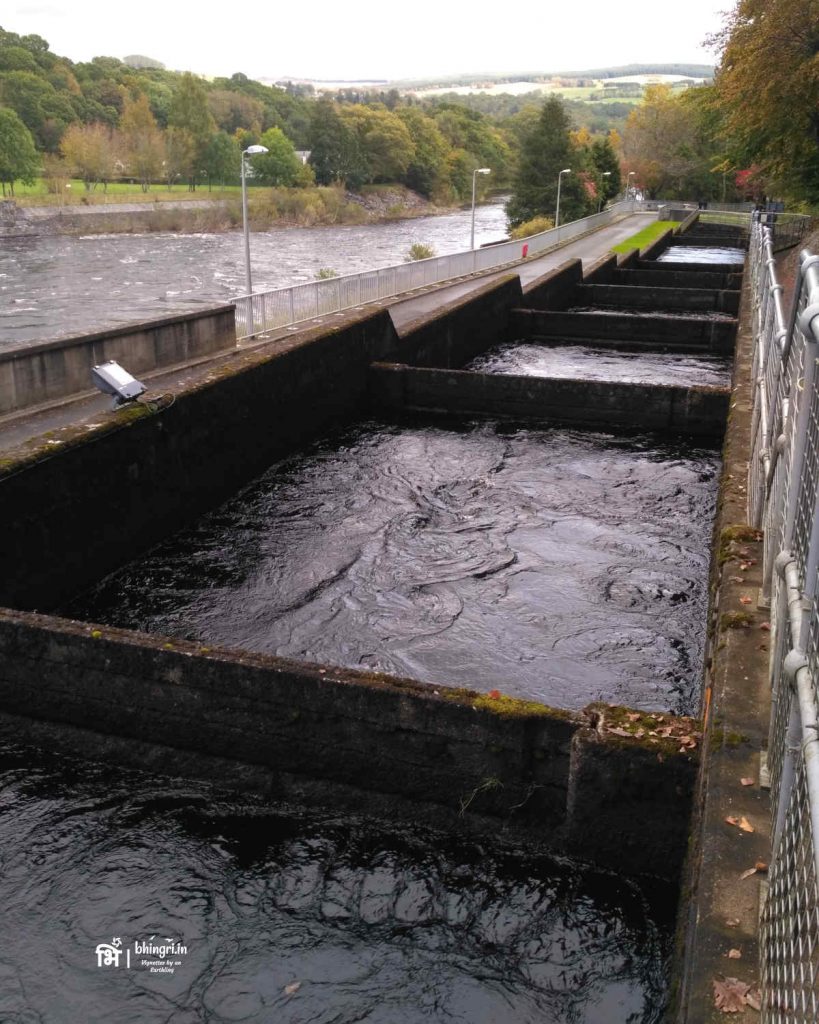
Even if you are not lucky and do not manage to spot any, you certainly would love the autumn colours.
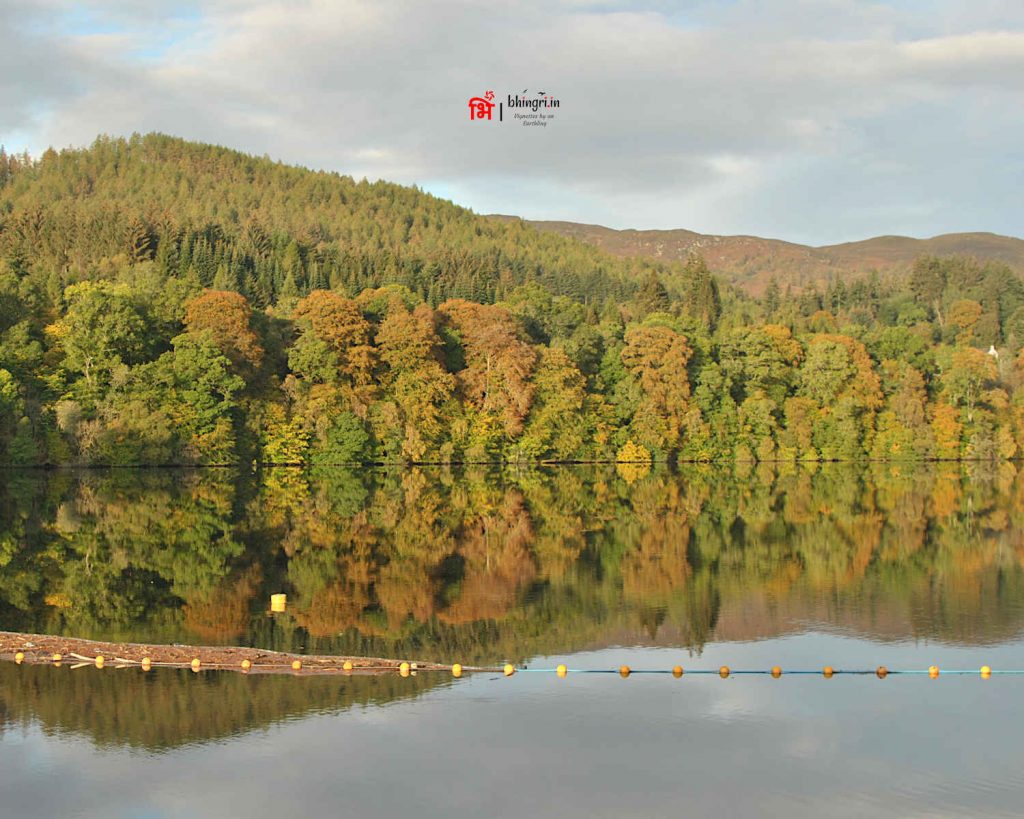
I don’t think I’ll be able to travel anywhere soon but if you fancy reading more about my earlier endeavours in Scotland, do read here.



